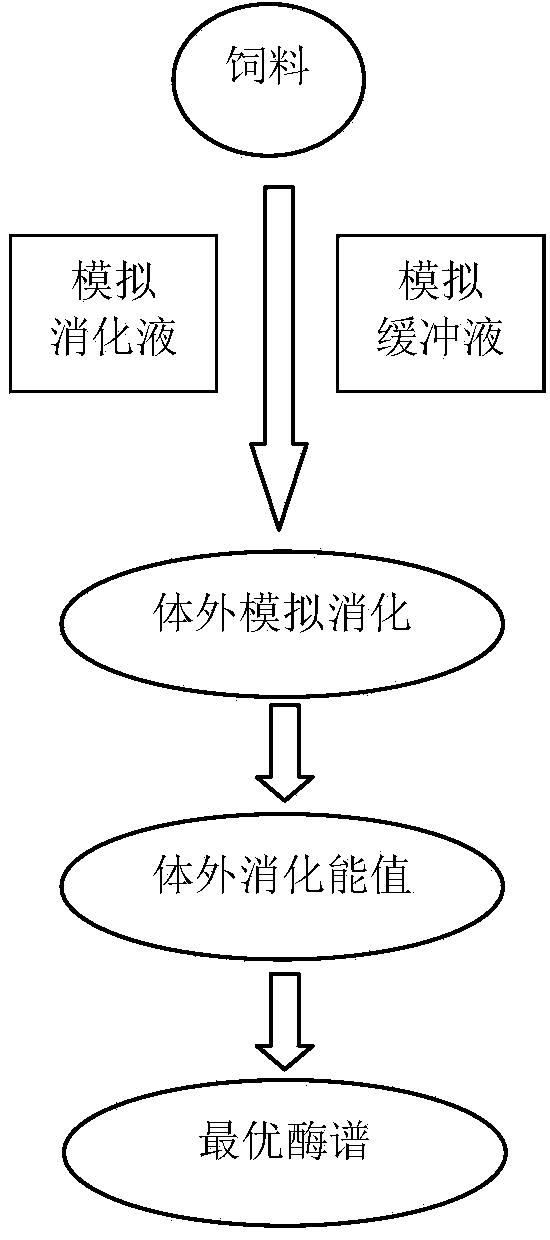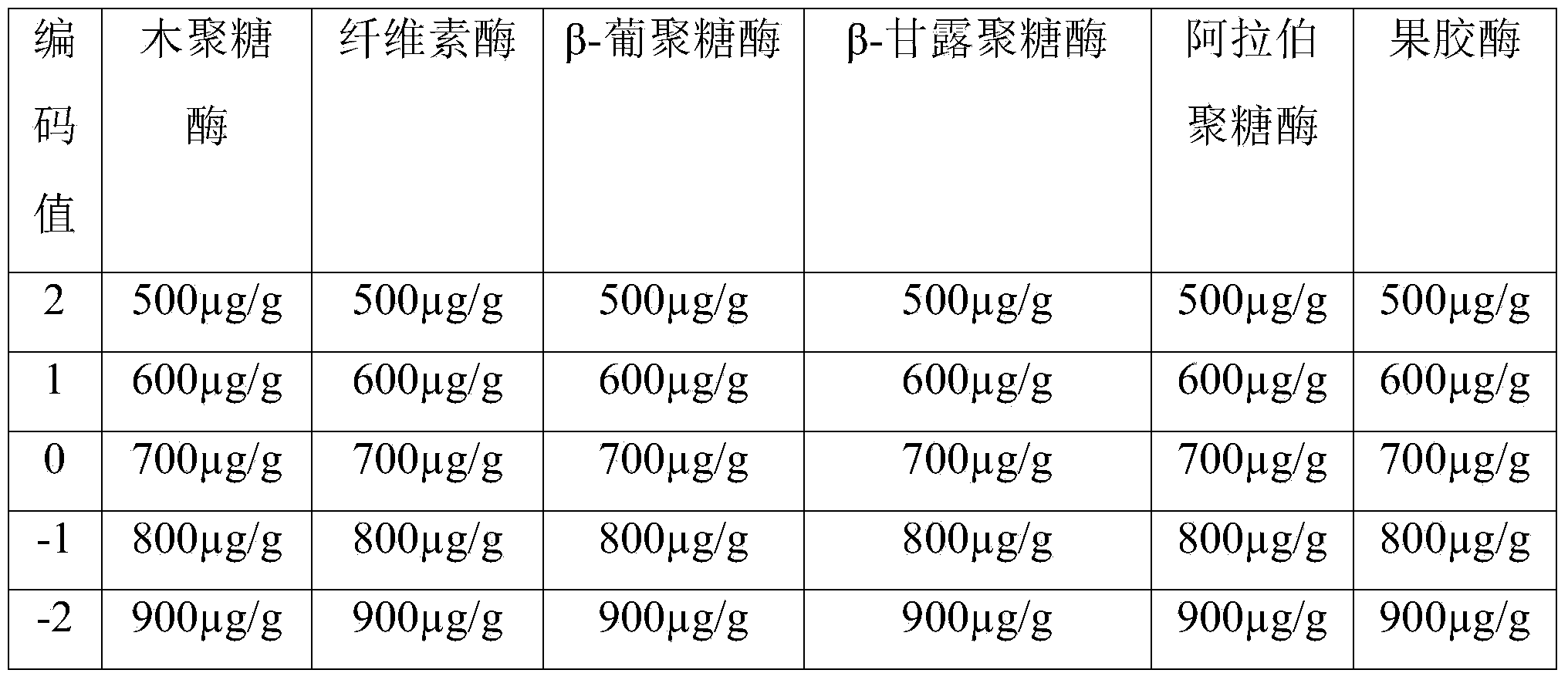Method for screening exogenous carbohydrase spectrum of chicken feed
A technology of carbohydrate enzymes and screening methods, which is applied in the field of screening of exogenous carbohydrate enzymes in chicken feed, can solve the problems of many factors affecting systematic errors and accidental errors, laborious, time-consuming, etc., and achieve rapid carbohydrate enzymes, optimization The Effects of Carbohydrate Enzymes
- Summary
- Abstract
- Description
- Claims
- Application Information
AI Technical Summary
Problems solved by technology
Method used
Image
Examples
Embodiment 1
[0023] Such as figure 1 Shown, concrete operation method of the present invention can be implemented in the following manner:
[0024] (1) Choose a corn-soybean meal ration, and add four exogenous carbohydrate enzymes to the feed, namely xylanase, cellulase, β-glucanase and pectinase, each exogenous carbohydrate The concentration gradient levels of compound enzyme additives were set to 0, 100, 200, 300, 400, 500, 600, 700, 800, 900, 1000 μg / g, respectively.
[0025] (2) Accurately weigh 1-2g (crushed and passed through a 60-mesh sieve) feeding sample (accurate to 0.0002g), put it in a 100ml corked Erlenmeyer flask, add buffer and digestive enzyme solution for simulating gastric digestion into the Erlenmeyer flask, Among them, the weight percentage of feed, simulated gastric buffer solution and simulated gastric digestive enzyme solution is 2:8:1; the buffer solution for simulated gastric digestion has a pH of 2.0, and the molar mass ratio is 90:8=sodium chloride:potassium chl...
Embodiment 2
[0031] (1) Select a wheat-soybean meal ration, and add five exogenous carbohydrate enzymes to the feed, namely xylanase, cellulase, β-glucanase, β-mannanase and pectin For enzymes, the concentration gradient levels of each exogenous carbohydrate enzyme additive were set to 0, 100, 200, 300, 400, 500, 600, 700, 800, 900, and 1000 μg / g, respectively.
[0032](2) Accurately weigh 1-2g (crushed and passed through a 60-mesh sieve) feeding sample (accurate to 0.0002g), put it in a 100ml corked Erlenmeyer flask, add buffer and digestive enzyme solution for simulating gastric digestion into the Erlenmeyer flask, Among them, the weight percentage of feed, simulated gastric buffer solution and simulated gastric digestive enzyme solution is 2:8:1; the buffer solution for simulated gastric digestion has a pH of 2.0, and the molar mass ratio is 90:8=sodium chloride:potassium chloride mixture Buffer solution; the simulated gastric digestive enzyme solution is 1000U / mL pepsin solution with p...
Embodiment 3
[0038] (1) Select a wheat-dough ration, and add six exogenous carbohydrate enzymes to the feed, namely xylanase, cellulase, β-glucanase, β-mannanase, arabic For glycanase and pectinase, the concentration gradient levels of each exogenous carbohydrate enzyme additive were set to 0, 100, 200, 300, 400, 500, 600, 700, 800, 900, 1000 μg / g, respectively.
[0039] (2) Accurately weigh 1-2g (crushed and passed through a 60-mesh sieve) feeding sample (accurate to 0.0002g), put it in a 100ml corked Erlenmeyer flask, add buffer and digestive enzyme solution for simulating gastric digestion into the Erlenmeyer flask, Among them, the weight percentage of feed, simulated gastric buffer solution and simulated gastric digestive enzyme solution is 2:8:1; the buffer solution for simulated gastric digestion has a pH of 2.0, and the molar mass ratio is 90:8=sodium chloride:potassium chloride mixture Buffer solution; the simulated gastric digestive enzyme solution is 1000U / mL pepsin solution with...
PUM
| Property | Measurement | Unit |
|---|---|---|
| Critical point | aaaaa | aaaaa |
Abstract
Description
Claims
Application Information
 Login to View More
Login to View More - R&D
- Intellectual Property
- Life Sciences
- Materials
- Tech Scout
- Unparalleled Data Quality
- Higher Quality Content
- 60% Fewer Hallucinations
Browse by: Latest US Patents, China's latest patents, Technical Efficacy Thesaurus, Application Domain, Technology Topic, Popular Technical Reports.
© 2025 PatSnap. All rights reserved.Legal|Privacy policy|Modern Slavery Act Transparency Statement|Sitemap|About US| Contact US: help@patsnap.com


